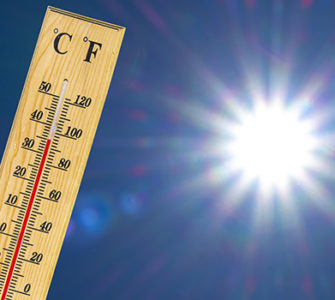Is there a connection between hemorrhagic hepatopathy and inactivated vaccines used in layers and layer breeders?
An interview with John Brown, DVM, Senior Technical Services Veterinarian Zoetis
Q: Hemorrhagic hepatopathy has been associated with the use of inactivated vaccines. Is it a common problem?
JB: No, it’s not common. Hemorrhagic hepatopathy isn’t seen only after vaccination. There are other possible causes, but when it’s associated with vaccination, it’s an occasional, random and unpredictable syndrome. It tends to occur 2 to 3 weeks after administration of an inactivated bacterin, such as a Salmonella vaccine. Oftentimes producers who have had the problem see it reoccur, then mysteriously disappear.
Q: What are the signs of the syndrome and can it be treated?
JB: There are deep reactions at the site of a vaccine injection. Organs hemorrhage, particularly the liver. Unfortunately, mortality is often the first sign and can reach 1% or more and persist for several weeks. Unfortunately, there is no treatment.
Q: Does the type of inactivated vaccine — specifically, commercial or autogenous — have any impact on the incidence of hemorrhagic hepatopathy?
JB: The jury is out on that. In broiler breeders, I’m aware of problems with hemorrhagic hepatopathy at two complexes after birds received the second dose of an autogenous Salmonella vaccine. I haven’t seen hepatopathy after use of autogenous bacterins in layers, but then, these vaccines aren’t used much in layers compared to broiler breeders.
Q: Then what’s your take on the cause?
JB: Liver lesions seen in affected birds look to be the result of an excessive reaction to the vaccine. It could be the vaccines associated with hepatopathy have more antigen and are therefore more reactive, but we don’t know for sure. The lesions could be due to other causes. It also appears that certain breeds of layers are more predisposed to developing these reactions, a possibility that needs to be investigated.
Q: What about overheating of inactivated vaccines? Could this contribute to hemorrhagic hepatopathy?
JB: That’s highly unlikely. Millions of doses of inactivated vaccines are administered — sometimes at temperatures that are warmer than advised — and there’s no ill effect, and I’ve seen hemorrhagic hepatopathy after injection of vaccines that were only slightly warmed.
Q: Why are most inactivated vaccines heated before injection?
JB: Many of the inactivated vaccines we use in long-lived birds are in an oil emulsion. Injecting them at low temperatures — say, 72° F (22° C) — has been associated with a strong tissue reaction. Warming results in less reaction1 and makes the vaccination process more comfortable and less stressful for the bird. Heating also reduces the emulsion’s viscosity, so the vaccine flows easily through the syringe and injection is easier. That’s why we warm them using either a vaccine warmer, usually supplied by the vaccine manufacturer, or with a warm-water bath.
Q: Do you see any errors in general with temperature management of inactivated vaccines?
JB: Most layer and layer breeder producers have done a great job training their vaccination crews, but I do occasionally see problems.
Q: Such as?
JB: You can’t expect a vaccine warmer or warm-water bath to readily warm vaccines just taken out of the fridge. Vaccines need to be brought to room temperature, then warmed. If you rush the process, you run the risk of the vaccine being too cold when injected.
The other problem I see is a failure to check the vaccine’s temperature before injection. This can be done with an instant-read cooking thermometer or an infrared temperature gun. Always check the label, but the injection temperature generally should be from 85° F to 90° F (29.4° C to 32.2° C).
Q: Overall, how important is temperature management of inactivated vaccines?
JB: It’s very important. These vaccines are valuable tools but need to be handled and administered correctly to get their maximum effectiveness. If they get too hot or cold, their efficacy could be impaired. If they are accidentally frozen, they need to be discarded. Another potential problem is bodyweight depression if inactivated vaccines are injected when they’re too warm or too cold, and of course, a vaccine that’s too warm or cold when injected can be uncomfortable for the bird.
Q: What can be done to ensure proper temperature management of inactivated vaccines?
JB: Start with the right equipment and make sure it’s working properly. That includes the refrigerator where the vaccines are stored, the vaccine warmers provided by vaccine manufacturers and whatever devices are used to check water-bath and vaccine injection temperatures.
Most inactivated vaccines should be refrigerated at 35° F to 45° F (1.6° C to 7.2° C). They should always be transported in coolers and never left exposed to sunlight. When it’s time to vaccinate, let them come to room temperature before warming. And by all means, don’t guess at that last, important step — check the vaccine’s temperature before injection.
1. Burns E, et al. Evaluation of the effect of heating an oil-emulsion Pasteurella multocida bacterin on tissue reaction and immunity. Avian Dis. 2003 Jan-Mar;47(1):54-8.
TOOLBOX, Issue 8
Toolbox is a series of interviews with veterinarians and other technical specialists about their experiences managing antimicrobials, vaccines and other tools for poultry health. It is produced by the editors of Poultry Health Today on behalf of the US Poultry Business of Zoetis.
NA-01676
Jun 2018
Posted on February 10, 2019












